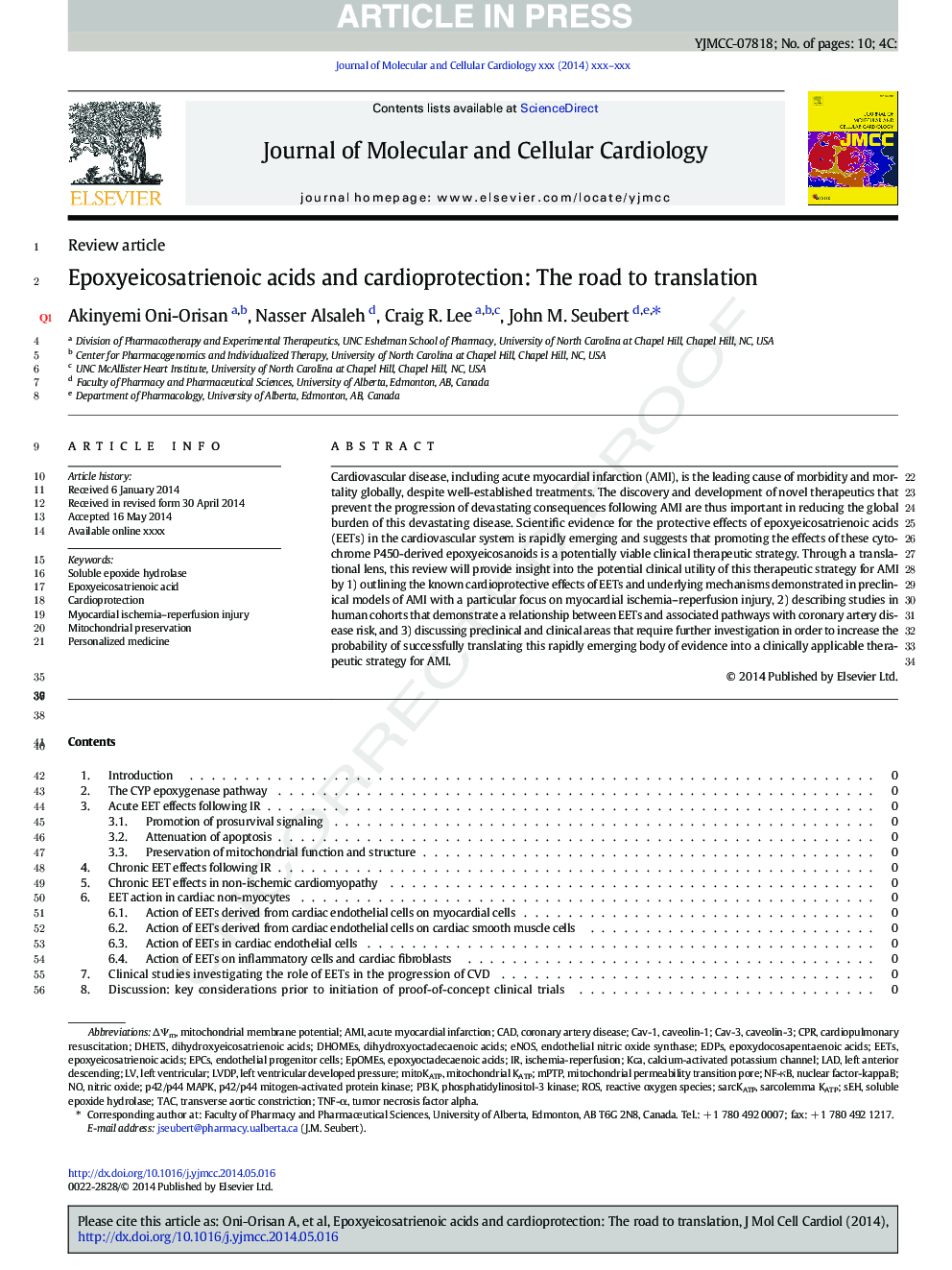| Article ID | Journal | Published Year | Pages | File Type |
|---|---|---|---|---|
| 8474704 | Journal of Molecular and Cellular Cardiology | 2014 | 10 Pages |
Abstract
Cardiovascular disease, including acute myocardial infarction (AMI), is the leading cause of morbidity and mortality globally, despite well-established treatments. The discovery and development of novel therapeutics that prevent the progression of devastating consequences following AMI are thus important in reducing the global burden of this devastating disease. Scientific evidence for the protective effects of epoxyeicosatrienoic acids (EETs) in the cardiovascular system is rapidly emerging and suggests that promoting the effects of these cytochrome P450-derived epoxyeicosanoids is a potentially viable clinical therapeutic strategy. Through a translational lens, this review will provide insight into the potential clinical utility of this therapeutic strategy for AMI by 1) outlining the known cardioprotective effects of EETs and underlying mechanisms demonstrated in preclinical models of AMI with a particular focus on myocardial ischemia-reperfusion injury, 2) describing studies in human cohorts that demonstrate a relationship between EETs and associated pathways with coronary artery disease risk, and 3) discussing preclinical and clinical areas that require further investigation in order to increase the probability of successfully translating this rapidly emerging body of evidence into a clinically applicable therapeutic strategy for AMI.
Keywords
EETsp42/p44 mitogen-activated protein kinasemitochondrial KATPp42/p44 MAPKDHETsEDPSEpoxydocosapentaenoic acidsLVDPKCamitoKATPEPCsΔΨmMPTPeNOSNF-κBPI3KAmIROSCardiopulmonary resuscitationCPRepoxyeicosatrienoic acidsdihydroxyeicosatrienoic acidsmitochondrial permeability transition poreischemia-reperfusionLeft ventricularLeft ventricular developed pressurecoronary artery diseaseEndothelial progenitor cellsendothelial nitric oxide synthaseAcute myocardial infarctionCADnuclear factor-kappaBphosphatidylinositol-3 kinaseLADNitric oxideMitochondrial membrane potentialleft anterior descendingcaveolin-1Calcium-activated potassium channelCav-1Cav-3Caveolin-3Reactive oxygen species
Related Topics
Life Sciences
Biochemistry, Genetics and Molecular Biology
Cell Biology
Authors
Akinyemi Oni-Orisan, Nasser Alsaleh, Craig R. Lee, John M. Seubert,
